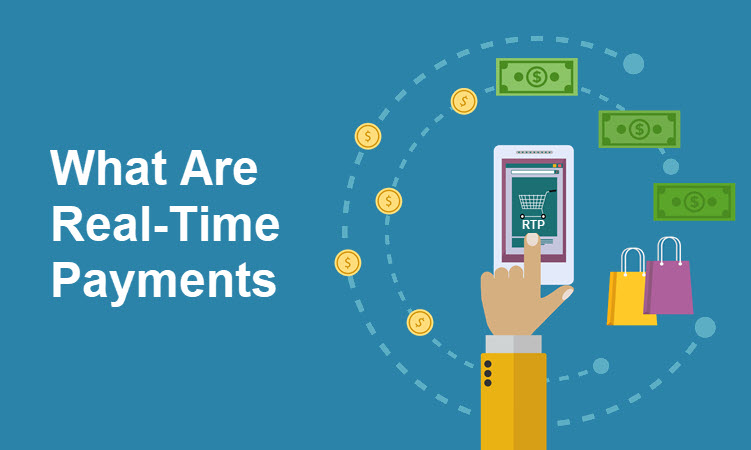The speed and security with which payments are processed is increasing and there is a growing market for alternative payment methods.
Real-time payments (RTPs) are electronic transactions that occur instantaneously within a secure online environment. They are practical, convenient, and user-friendly options for payers who want to send money without delay.
This article explains what real-time payments are, how they work, and discusses the advantages and challenges RTPs bring to merchants.
What Are Real-Time Payments?

Real-time payments (RTP) are electronic transactions initiated and cleared in a matter of seconds via an RTP rail – an online infrastructure or network that enables secure and fast real-time payment processing around the clock, including weekends and holidays.
RTPs are push transactions, meaning that only payers can initiate real-time payments. In pull payments, payees initiate the transfer. Also, since real-time payments are cleared in a few seconds’ time, they can’t be reversed.
At the time of writing this article, more than 50 countries worldwide have their own real-time payments schemes. The first to introduce RTPs in the US is The Clearing House Association.
Note: The Federal Reserve plans to launch its own RTP rail, the FedNow by 2023.
How Do Real-Time Payments Work?

When a payer makes a real-time payment, the money is transferred to the payee’s account within a few seconds. Payers initiate real-time payments via various online channels: digital wallets, mobile banking apps, and other online services.
All background procedures – initiation, authorization, clearance, and settlement – are carried out within a short timeframe through an RTP rail. The RTP rail is the digital infrastructure developed to support and facilitate real-time payments. Apart from the RTP rail, there are no other supervising bodies that would cause a delay in the transfer of funds. To enable real-time payments and connect to an RTP rail, credit unions and banks must develop appropriate backend systems which are available 24/7.
Real-time payments are based on the open-loop principle, meaning that payments are linked to a user’s bank account, as opposed to closed-loop payments, which are connected to a prepaid balance. This means that every bank account owner is eligible to receive a real-time payment.
When implementing real-time payments, it is essential to apply a data-rich messaging format, such as the ISO 200022. This makes it possible to resolve errors promptly and mitigate the risk of processing delays, while increasing the security of all the participants in the transaction. Also, additional information, such as a purchase ID, can be easily added to an RTP.
Real-Time Payments vs. Faster Payments
Although real-time payments and faster payments are terms that are used interchangeably, they are not the same thing.
Unlike a real-time payment, which is completed within seconds, a faster payment is any transaction which is carried out faster than what is typical for the payment type in question. For instance, it normally takes 2-5 business days for ACH transactions to settle. NACHA’s same-day transactions are faster payments because they are settled within one business day.
Peer-to-peer payments (P2P), such as PayPal and Venmo, are also examples of faster payments.
Advantages and Disadvantages of Real-Time Payments
Merchants wishing to use real-time payment processing should consider these advantages and disadvantages.
Advantages

These are the major advantages of real-time payments:
- New customer segments and markets available. Merchants offering additional payment methods, such as RTPs, can target new customer segments and generate more leads worldwide. P2P payment apps are becoming more popular in various markets, from India and China to Brazil and Mexico. Real-time payments facilitate business expansion to new markets and customer segments.
- Stimulated consumer spending. The ease of use of real-time payments provides an opportunity to stimulate consumer spending. Frictionless payment methods, such as RTPs, are proven to encourage consumer spending.
- Advanced financial management. As RTPs are cleared and settled in a matter of seconds, merchants can plan and adapt their finances more efficiently. Whether you are about to receive a cash return on a recent investment or to trade stocks, RTPs let you move your money quickly and make critical business decisions in real-time.
- Improved liquidity. Businesses with fewer assets don’t need to wait for clients’ payments to settle. With RTPs they can cover their payroll and accounts payable quickly.
Disadvantages

Real-time payments come with certain disadvantages:
- Upfront investments. Real-time payments require integrating new technology with existing systems. Additionally, the implementation must provide real-time payment monitoring to ensure security and data availability.
- No returns. In real-time payments, funds are irrevocable because everything happens within a short timeframe. Once the payment is received, it can’t be reclaimed. Since RTPs are carried out directly between bank accounts, without card associations, there’s no monitoring body for chargeback requests. Hence, merchants need to be careful how they handle refund requests.
- Security concerns. Every new technology brings new security concerns. RTP payment providers need to ensure secure online payments and protect transactions from intrusions and data theft.
- Customer service. As RTPs are immediate transactions, they require specific customer service, capable of responding to customers’ complaints, chargebacks, and other potential requests. Merchants need to adequately educate and prepare their support service to handle RTPs.
The Rising Trend of Real-Time Payments

Merchants, banks, and individuals worldwide have embraced real-time payments to improve their financial operations. By 2030 the global worth of RTPs will have reached $193.07 billion, according to Grand View Research, Inc.
Many other countries are experiencing a fast adoption of real-time payments. Statista reports that the transaction value of RTPs in India surpassed $25 billion in 2020. That same year, it exceeded $15 billion in China, $6 billion in South Korea, and $2.8 billion in the UK.
In the US, customers and merchants have remained loyal to credit cards and traditional payment methods. However, things are also changing in the US payments market. A report published by Visa in June 2018 showed that 85% of interviewed merchants would switch to another payment processor to receive RTPs. Citizens Bank reports that 90% of business executives are ready to start using RTPs, 52% of merchants expect this innovation to improve cash flow management, while 46% think it will contribute to the general monitoring of accounts payable.
The introduction of the FedNow and the NACHA’s Faster Payments Professional certificates program, is expected to significantly increase the share of RTPs in the US electronic payments market.
Conclusion
Merchants, banks, and customers readily accept payment options that efficiently respond to their needs. Across the world, real-time payments have proven their worth and are the future of electronic transactions.
The guide above helps merchants understand the role of real-time payments in the future business environment.
